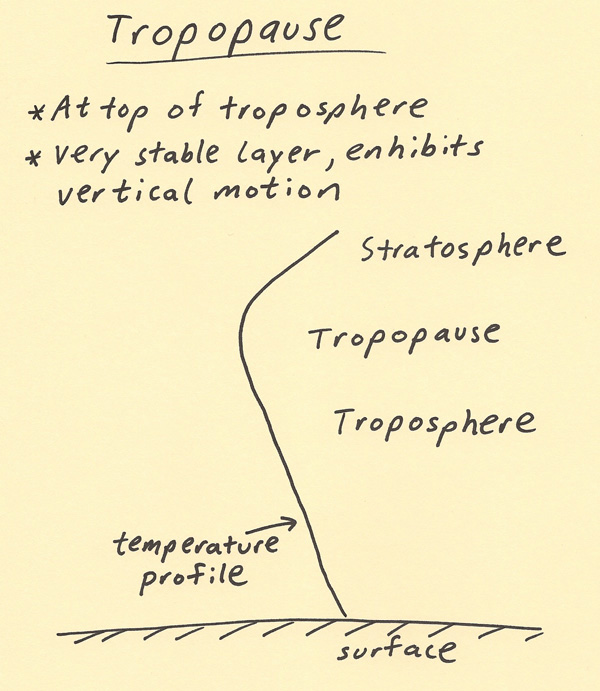
| HABYTIME MINI LECTURE 41: TROPOPAUSE (TROP)
| |||||||||||||||||||||||||||||||||||||||||||||||||||||||||||||||||||||||||||||||||||||||||||||||||||||||||||||||||||||||||||||||||||||||||||||||||||||||||||||||||||||||||||||||||||||||||||||||||||||||||||||||||||||||||||||||||||||||||||||||||||||||||||||||||||||||||||||||||||||||||||||||||||||||||||||||||||||||||||||||||||||||||||||||||||||||||||||||||||||||||||||||||||||||||||||||||||||||||||||||||||||||||||||||||||||||||||||||||||||||||||||||||||||||||||||||||||||||||||||||||||||||||||||||||||||||||||||||||||||||||||||||||||||||||||||||||||||||||||||||||||||||||||||||||||||||||||||||||||||||||||||||||||||||||||||||||||||||||||||||||||||||||
METEOROLOGIST JEFF HABY
The atmosphere is divided into 5 primary layers which are the troposphere, stratosphere, mesosphere, thermosphere and exosphere. The weather
primarily takes place in the troposphere. The reason for this is because of the temperature structure difference between the troposphere
and stratosphere. In the troposphere, the temperature decreases with height on average. Thus, a parcel of rising air can many times
remain warmer than this surrounding air through much of the troposphere in a convective thunderstorm situation. However, toward the
top of the troposphere the temperature structure changes. In the stratosphere, the temperature increases with height which results
in a strong stability in this layer. Warming produced from some sunlight absorbing into ozone is what gives the stratosphere a
stable temperature profile. The boundary between the troposphere and the stratosphere is called the tropopause (trop). In the
tropopause the lapse rate of temperature switches from decreasing with height to increasing with height. Storms have lost much
of their moisture once they reach of tropopause since saturated rising air continues to cool and precipitate out moisture. Also,
the stability of the tropopause decreases then eliminates any upward momentum the rising parcel of air had as it enters the tropopause.
An overshooting top is the portion of a thunderstorm updraft with the strongest momentum as it moves into the tropopause. The
overshooting top can be seen rising higher in elevation that surrounding anvil cloud. This overshooting top will eventually cease
in upward motion due to the stability in the tropopause and stratosphere.
The diagram below shows a temperature profile from the surface. On average the temperature decreases by about 6.5 C/km in the
troposphere. The tropopause is about 12 km in height above sea level but tends to be a lower height in polar areas and during
cold weather and tends to be higher in height in tropical locations and when the weather is warm. The tropopause acts like a cap
or lid on air from the troposphere mixing with air in the stratosphere.

|
|
|

